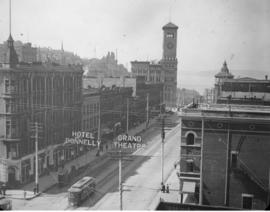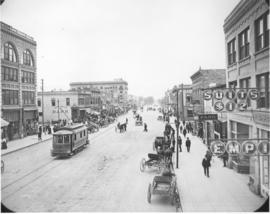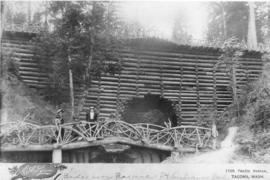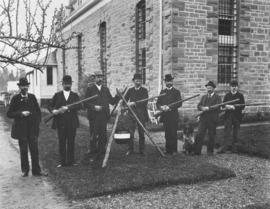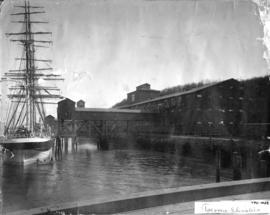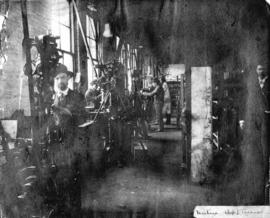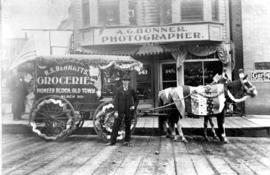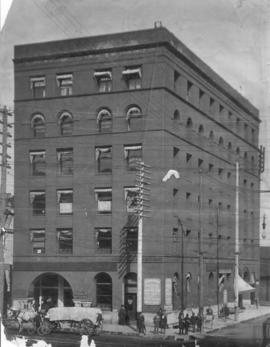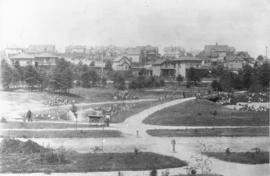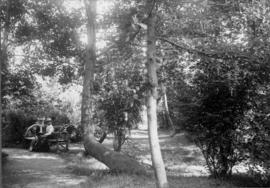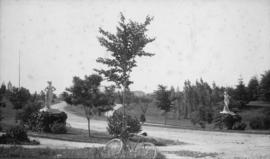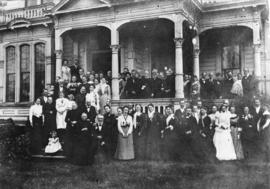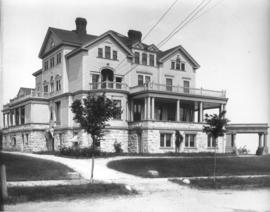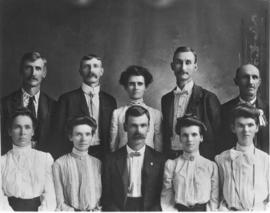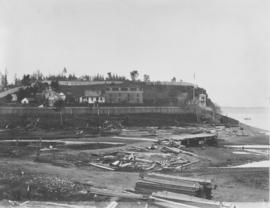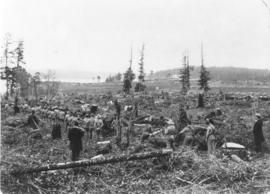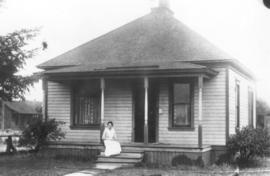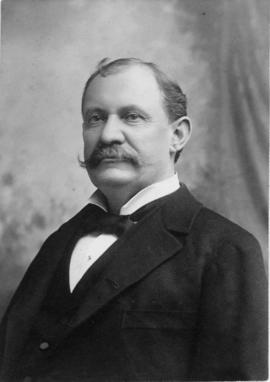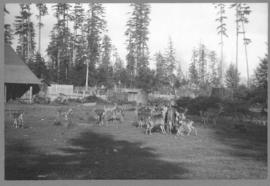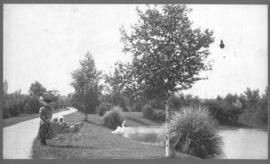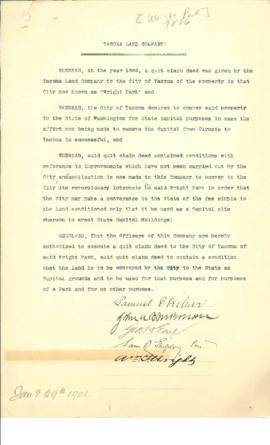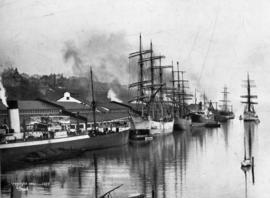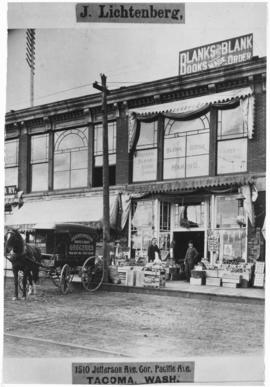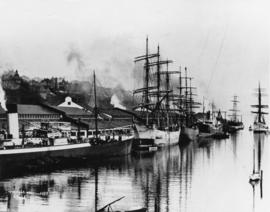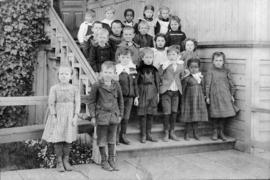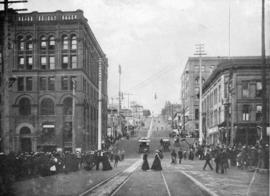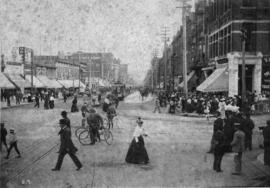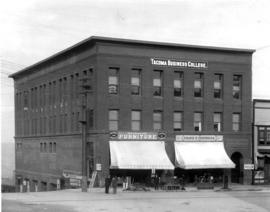- Item
- 1900
Part of Richards Studio Photographs
ca. 1900. Copy of print made from glass plate. Pacific Avenue appears devoid of traffic other than one streetcar in the early years of the 20th century. This photograph was taken early one morning in the vicinity of 9th & Pacific; the distinct image of the Old City Hall can be observed clearly a block ahead. The names "Hotel Donnelly" and "Grand Theatre" have been imprinted onto the photograph. The Hotel Donnelly was probably one of the earliest hotels in the city, as it was listed in the 1893-94 City Directory. It was located on the northwest corner of Pacific Ave. & So. 9th St. The Motoramp Garage was to later be built on this site. Hotel Donnelly was in close proximity to the Hotel Revere, whose sign can be seen protruding from the building. The Hotel Revere, by 1907, was operated by John Fawcett and located at 732 1/2 Pacific Avenue. The Grand Theatre's first mention was in the 1907 City Directory. It was located on the northeast corner of Pacific & So. 9th. Sullivan & Considine were listed as proprietors and Dean B. Worley as manager. Date of original print is not known; copy from glass plate was made on October 3, 1958. TPL-8546
Commercial streets--Tacoma--1900-1910; Hotel Donnelly (Tacoma); Hotel Revere (Tacoma); Old City Hall (Tacoma); Cities & towns--Tacoma;
